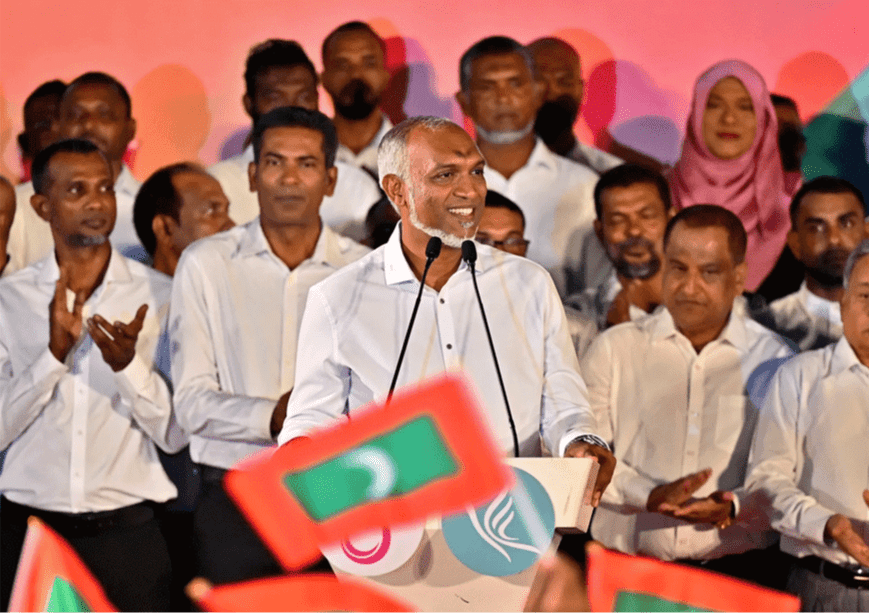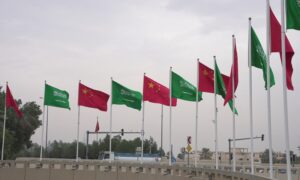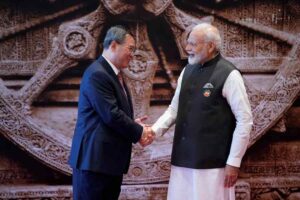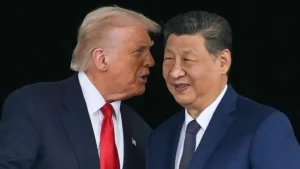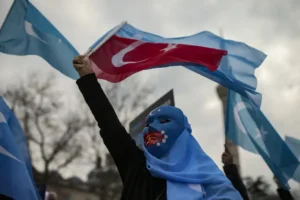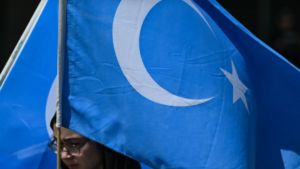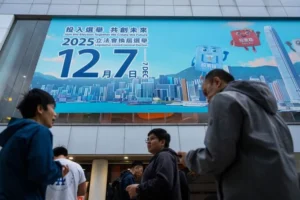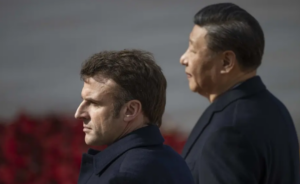Maldives’ Election Aftermath: Navigating Geopolitical Shifts
President Mohamed Muizzu’s recent landslide victory in the Maldives’ parliamentary elections has dramatically reshaped the country’s political landscape. From a surprising political journey, marked by his initial role as a proxy candidate and subsequent fallout with his mentor, President Yameen, Muizzu now commands an impressive majority in parliament. With 66 seats secured by his party and allied factions, Muizzu wields “absolute power,” a situation that has raised red flags among democratic advocates fearing a slide towards autocracy.
This consolidation of power under Muizzu’s Progressive National Congress (PNC) has sparked concerns about a potential return to dictatorship, undoing nearly two decades of democratic progress. Critics point to the lack of internal checks within the PNC and the stifling of dissenting voices, exemplified by the swift crackdown on critical media and satire post-election. Moreover, the growing influence of China in the Maldives’ political and economic spheres adds complexity to the region’s geopolitical dynamics.
A high-tech Chinese research vessel, the Xiang Yang Hong 03, has returned to the Maldives after a two-month absence. The 4,500-tonne ship previously docked there for a week in February, raising concerns in India. This return visit comes despite the Maldivian government’s silence on the reason. Notably, they had granted permission for the ship’s first visit. The development coincides with a period of tension between India and the Maldives. Pro-China president Mohamed Muizzu recently strengthened his grip on power through a parliamentary election victory. The Xiang Yang Hong 03 has been active near the Maldives since January, patrolling the archipelago nation’s Exclusive Economic Zone (EEZ) before its first docking.
In 2016, China’s State Oceanic Administration (SOA) acquired the Xiang Yang Hong 03, a 100-meter long research vessel unique in its class for its 4,500-tonne displacement. Since 2019, it has been deployed for deep sea and distant water surveys as part of China’s Pilot Ocean Laboratory. The vessel is equipped with data buoys that measure ocean currents, waves, and other environmental factors, and transmits real-time satellite data to the Chinese government. Interestingly, the Xiang Yang Hong 03 was spotted near the India-Maldives-Sri Lanka military exercise “Dosti-16” held in February. This appearance came after Sri Lanka, citing concerns raised by India about Chinese research vessels in the region, imposed a year-long ban on foreign research ships entering its waters in January, effectively denying entry to the Xiang Yang Hong 03.
The ship stayed in the Maldives for six days before returning to the edge of the EEZ. The Maldivian government assured that the ship’s visit was just a routine stop for crew change and supplies, following a request by China. However, this movement of the ship between the Maldives and Sri Lanka caused worry in India. India is concerned about China’s growing influence in the Indian Ocean region, and this ship’s activity is seen as part of a larger trend. They are not worried about the Maldives specifically but about the strategic implications of China’s actions in the entire region.
India earlier raised concern about Chinese reconnaissance vessels in the Indian Ocean region. Sri Lanka refused permission for such ships to dock since 2022. Last year, India raised an alarm about a Chinese surveillance ship visiting Sri Lanka, fearing its tracking systems could be used for spying. This is not an isolated incident. In 2021, India voiced strong opposition to a similar Chinese ship docking in Sri Lanka, and in 2019, even expelled a Chinese research vessel from its waters for entering without permission. Despite China claiming its research activities are peaceful and for scientific purposes, India remains watchful of these vessels’ movements near its borders.
The Maldives’ location makes it strategically important for a couple of reasons. First, it’s very close to India. The island nation is just 70 nautical miles from Minicoy Island in Lakshadweep and 300 nautical miles from India’s western mainland coast. Second, the Maldives sits right in the middle of busy shipping lanes that cross the Indian Ocean Region (IOR). This proximity to key trade routes and India itself makes the Maldives a significant player in the region.
Meanwhile, the frostiness which has characterised Maldive’s recent approach to India unfortunately led a to significant drop in the number of Indian tourists to the island nation. The Maldives Ministry of Tourism recently released its visitor arrival report, which shows a significant shift in tourist demographics for the first quarter of 2024 compared to 2023. There was a sharp decline in Indian visitors. Over the same period, the number of Indian tourists dropped by 38%, or roughly 40%, from 56,208 in 2023 to 34,847 in 2024.
In the first three months of 2023, over 56,000 Indians visited the island nation. However, that number plunged to 34,847 during the same period in 2024, reflecting a 38% decrease. This shift is especially stark considering India’s previous dominance in Maldives tourism. As a result, India is no longer the leading source of tourists for the Maldives, having now fallen to sixth place. This trend is a reversal from the past, where India consistently held a top spot. As recently as 2023, Indians were the second-largest tourist group in the Maldives, behind only Russians.
India used to be the number one source of tourists for the Maldives. This all changed since early January this year. On January 2nd, India dropped to third place among the top 10 tourist nations for the Maldives. This decline continued, with India falling to fifth place on January 21st and then all the way down to sixth place by March 3rd.
India and Maldives have long enjoyed a close and historic relationship. Sharing cultural and ethnic ties, both nations have been neighbours since ancient times. Since the Maldives’ independence in 1965, India has been a key partner, providing political, economic, and military support. This partnership is evident in collaborative efforts on infrastructure projects, healthcare initiatives, and defence training. Recent developments like the Greater Male Connectivity Project and the Cancer Hospital Project further solidified this strong bond. With frequent high-level visits and growing trade ties, India and Maldives had been looking forward to further strengthening their relationship in the future, until the current ruling formation came to power late last year. India prioritizes political stability in the Maldives, the safety of its citizens there, and open trade. It also seeks to counter regional threats. India’s approach encompasses economic aid, cultural exchange, and strategic cooperation, reflecting its Neighbourhood First policy.
China appears to be fast moving into the vacuum created by India’s declining role in the Maldives over the last three or four months. The Maldives’ main opposition party, the Maldivian Democratic Party (MDP), raised concern earlier this March about a large agricultural project awarded to a Chinese company on Uthuru Thila Falhu island. They believed this project might be a cover for Chinese military activity. This concern arises from several factors, including the island’s proximity to a Maldivian military harbour and the history of the Chinese company involved, China Harbour Engineering Company (CHEC). CHEC has been involved in land reclamation projects used for military purposes in the past. Furthermore, the project’s approval coincides with Maldivian President Muizzu’s recent actions that favour China over India, including allowing a Chinese research vessel to dock in the Maldives.
The Maldives, a tourism-dependent nation in the Indian Ocean, faces a precarious economic situation. Heavily indebted, particularly to China, the country is at risk of debt distress. This stems from extensive construction projects funded by Chinese loans during the previous administration. The current administration’s pro-China stance raises concerns about growing Chinese influence and a potential strain on relations with India. The revival of a China-Maldives Free Trade Agreement could further complicate matters, potentially impacting Maldivian government revenue and the wider South Asian region. Transparency in loan agreements and responsible debt management are crucial for the Maldives’ economic stability.
Conclusively, in the tumultuous aftermath of President Mohamed Muizzu’s recent significant electoral victory, the Maldives stands at a crossroads fraught with geopolitical tensions and economic uncertainties. Prudent governance, transparency, and strategic diplomacy are imperative as the nation grapples with economic challenges, including substantial debts to China. The consolidation of power under Muizzu’s presidency, marked by his alignment with China and strained relations with India, raises profound concerns about democratic integrity and regional stability. The resurgence of Chinese strategic presence, characterized by the return of the Xiang Yang Hong 03 research vessel, underscores the complex interplay of interests in the Indian Ocean. The revival of a China-Maldives Free Trade Agreement further complicates matters, prompting scrutiny over economic independence and broader regional implications. The Maldives must navigate these complexities with vigilance, ensuring democratic principles, sovereignty, and sustainable economic development for a stable Indo-Pacific region.
*Dr. Maheep is a leading analyst of International Relations and Global Politics. He has been in teaching and conducting research for over a decade.
